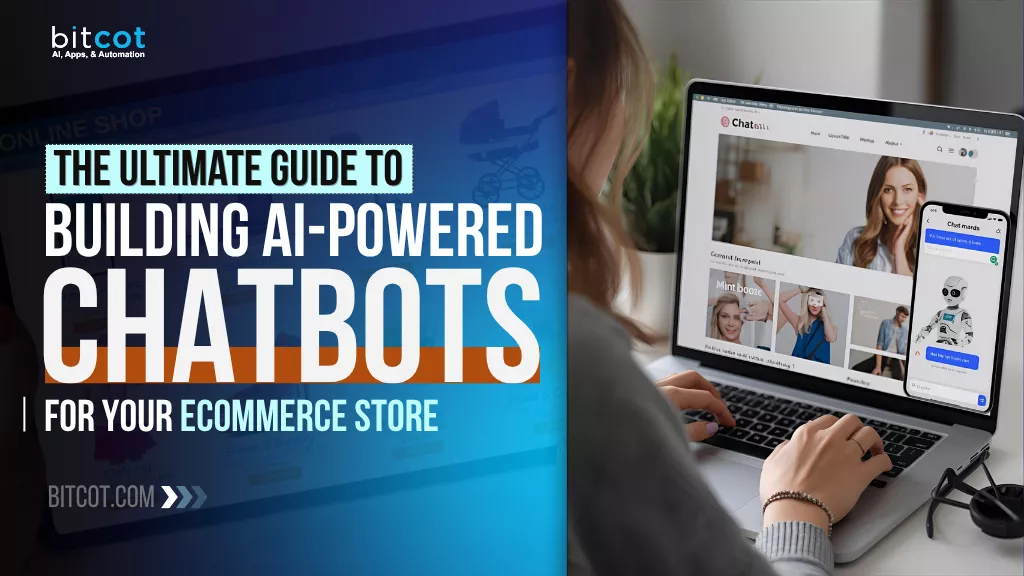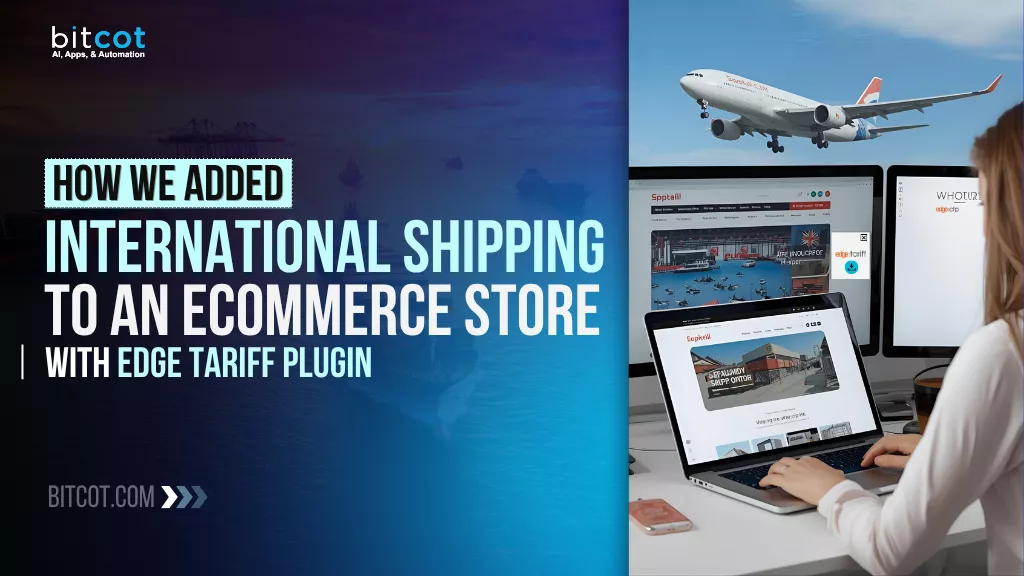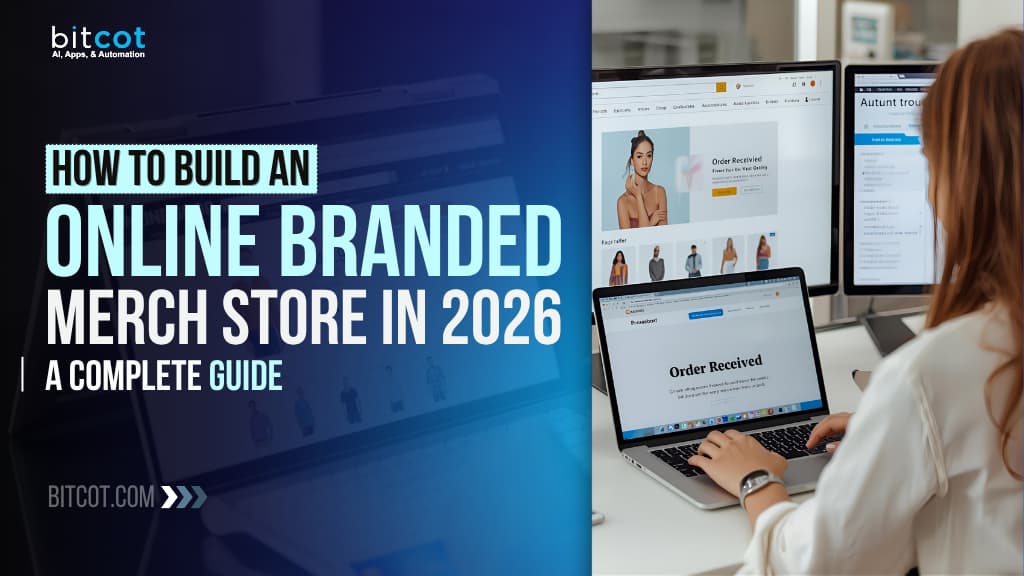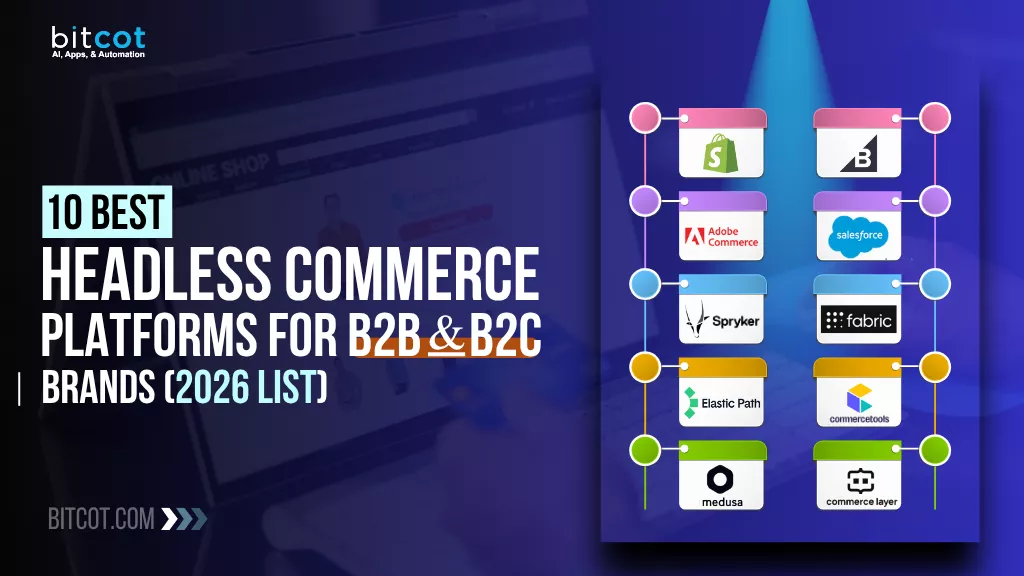
Your customers are shopping everywhere: your website, Amazon, Instagram, and even TikTok, expecting the same smooth, personalized experience every time.
But if your commerce stack isn’t connected, every sale feels like starting from scratch. Your team scrambles to update product data, manage separate inventories, and manually sync content across platforms, while your customers move on to brands that feel faster and smarter.
Sound familiar?
Today’s buyers expect seamless, real-time experiences no matter where they shop. Whether it’s B2B or B2C, they want consistent pricing, product info, and checkout flow, from your app to your marketplace listings. When your systems can’t deliver that, growth slows and conversions drop.
In this post, we’ll explore the 10 best headless commerce platforms for 2026, built for modern brands that want speed, flexibility, and control. You’ll see which platforms empower both developers and marketers, enabling you to design stunning storefronts, launch across channels, and scale globally without tech bottlenecks.
Ask yourself:
- How easily can your current platform adapt to new sales channels?
- How fast can you test and launch a new product experience?
- And how often do you find yourself limited by your eCommerce backend?
You already know traditional platforms can’t keep up. The future of commerce is headless, separating the front-end experience from the back-end engine so your brand can move at the pace of your customers.
Whether you’re a startup ready to scale or an enterprise rethinking your digital infrastructure, this guide will help you choose the right foundation.
Headless commerce isn’t just a trend; it’s how leading brands are building flexible, future-ready storefronts that sell anywhere.
The question is: are you ready to make the switch?
What Are Headless Commerce Platforms and Why Do They Matter?
Let’s start with the basics: what does “headless commerce” even mean?
Imagine your online store as a person. The “head” is everything your customers see: the website design, layout, and user experience (the front end). The “body” is the behind-the-scenes system that powers it all: your product database, checkout process, inventory management, and more (the back end).
Now, in a traditional eCommerce setup, the head and body are tightly connected. That means if you want to make changes to your site’s design or add a new channel (like a mobile app or smart display), you’re often limited by the backend system. It can feel like trying to turn your head when your neck’s stuck; not much flexibility there.
Headless commerce changes the game. It decouples the front end from the back end, giving businesses the freedom to use whatever technology they want to design the shopping experience, while still relying on a robust backend for data, inventory, and checkout.
In simpler terms? You get the best of both worlds: creativity and performance.
So, why does this matter? Because customer expectations are sky-high. Shoppers want seamless, personalized experiences across every device: websites, apps, voice assistants, and even in-store screens.
Headless commerce makes that possible. It empowers brands to:
- Move faster: launch new experiences or campaigns without overhauling the backend.
- Be more creative: build custom front-end designs without backend restrictions.
- Sell anywhere: easily integrate with multiple platforms and devices.
In short, headless commerce gives you agility. And in the ever-changing world of eCommerce, agility is everything.
| Aspect | Traditional Commerce | Headless Commerce |
| Structure | Front-end and back-end are tightly connected | Front end and back end are separated (decoupled) |
| Flexibility | Limited; design changes can affect the entire system | Highly flexible; front-end can be updated independently |
| Speed of Updates | Slower; requires full-stack changes for even small updates | Faster; front-end teams can make quick changes without backend delays |
| Omnichannel Support | Usually restricted to web or mobile web | Built to support multiple channels: web, app, voice, IoT, and more |
| Customization | Template-based and harder to personalize | Fully customizable with modern frameworks (React, Vue, Next.js, etc.) |
| Scalability | May struggle with high traffic or large catalogs | Easily scalable through a cloud-based, API-driven architecture |
| Integration | Limited third-party integrations | Seamless integration with any CMS, CRM, or marketing tool via APIs |
| Development Freedom | Constrained by platform rules and architecture | Developers can choose their own tech stack and tools |
| User Experience | Consistent but less dynamic | Rich, fast, and tailored user experiences across all devices |
Key Features of a Modern Headless Commerce Platform
Alright, so now that we know what headless commerce is, let’s talk about what actually makes a modern headless commerce platform tick.
These aren’t just fancy buzzwords; these features are what give brands the flexibility, speed, and power to stay ahead of the game.
Here’s what you’ll typically find under the hood:
1. API-First Architecture
APIs (Application Programming Interfaces) are the backbone of headless commerce. They’re what allow the front end and back end to communicate smoothly. Think of them as digital messengers, passing product data, prices, and customer info between systems in real time.
2. Flexible Front-End Development
With headless commerce, developers aren’t stuck using whatever front-end framework the platform provides. They can use React, Vue, Next.js; you name it. This freedom means you can design unique, fast, and highly personalized user experiences without touching the backend.
3. Cloud-Native Infrastructure
Modern headless platforms live in the cloud, which means they’re built for scalability and reliability. Whether you’re handling a holiday traffic spike or expanding globally, the system adjusts automatically; no more sleepless nights worrying about servers crashing.
4. Omnichannel Integration
Your customers shop everywhere: on mobile, desktop, social media, and even through smart devices. A headless platform connects all these touchpoints seamlessly, ensuring your product data, pricing, and inventory stay consistent across every channel.
5. Personalization & Data Insights
The best headless commerce systems integrate smoothly with AI tools and analytics platforms, helping you understand customer behavior and tailor experiences. Imagine showing personalized product recommendations or dynamic content based on each visitor, all without extra coding chaos.
6. Modular Architecture
Headless commerce isn’t a one-size-fits-all setup. You can pick and choose components, such as payments, search, checkout, like building blocks. This modularity lets your team innovate faster and swap out tools as your business grows.
Understanding the key features of a modern headless commerce platform helps you see what truly drives performance, flexibility, and omnichannel growth. Now that you know what to look for, let’s move into the 10 best headless commerce platforms for B2B and B2C brands in 2026, built to support fast, scalable, future-ready experiences.
10 Best Headless Commerce Platforms for B2B & B2C Brands in 2026
Whether you run a fast-growing D2C brand, a complex B2B operation, or something in between, the right platform can help you deliver seamless experiences across every channel. But with so many options out there, choosing the right one can feel like navigating a maze.
To make things easier, we’ve rounded up ten of the best headless commerce platforms for both B2B and B2C brands in 2026. Each one brings something unique to the table, from easy integrations and scalability to open-source freedom and enterprise-grade control.
Let’s take a closer look at the top contenders worth your attention this year.
1. Shopify Plus
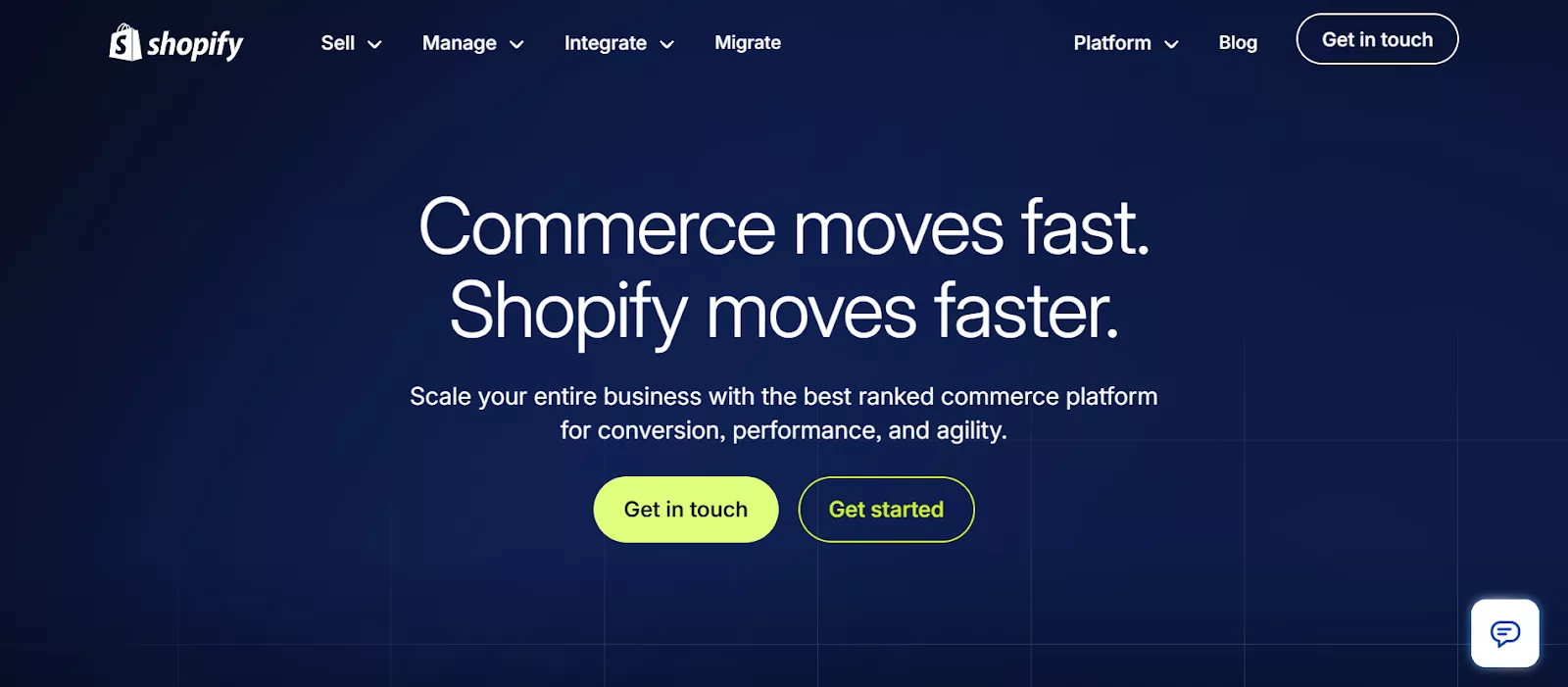
Shopify Plus extends the reliability of Shopify into the headless world. It combines a familiar backend with the freedom to design your own front end using frameworks like React or Next.js. Perfect for brands that want to move fast and experiment with new experiences.
Best for: B2C brands scaling globally.
Highlight: Massive ecosystem with enterprise-level flexibility.
2. BigCommerce
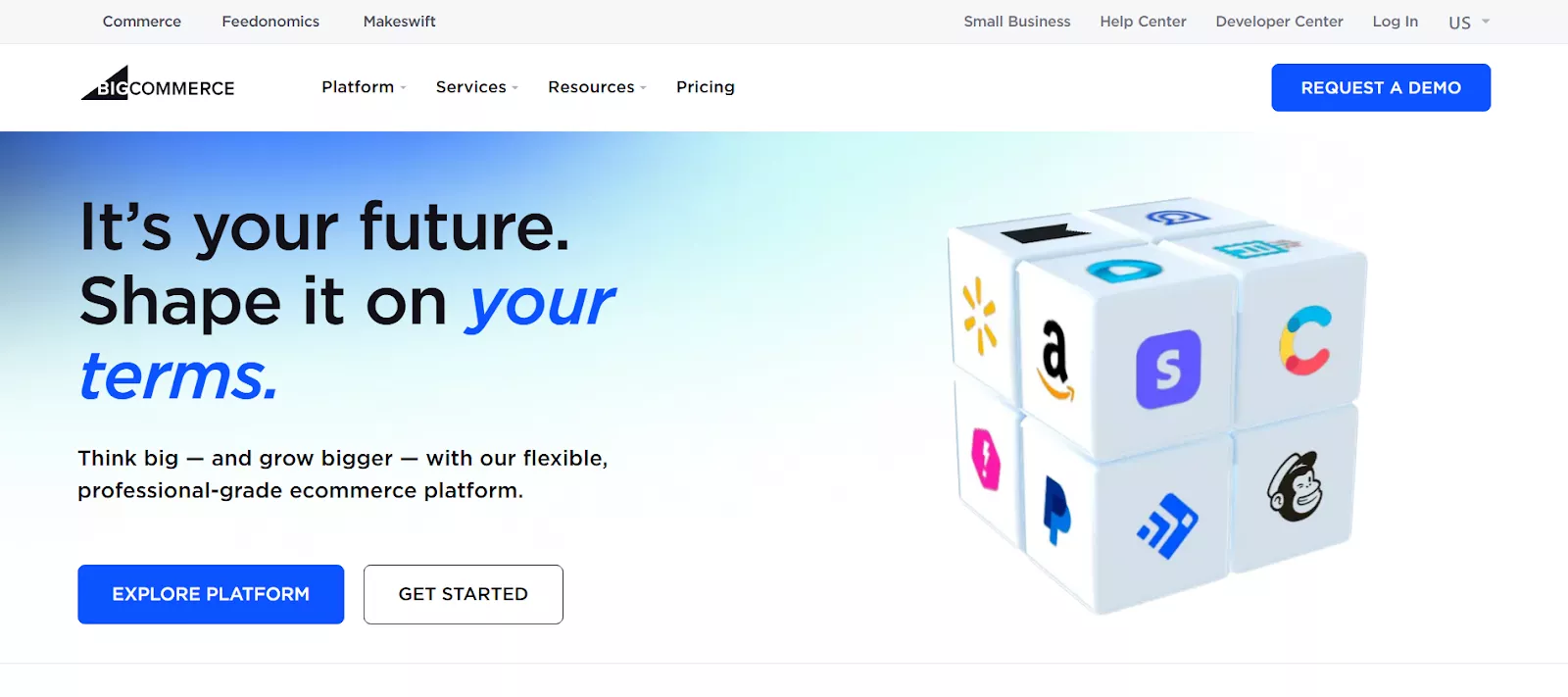
BigCommerce delivers the convenience of SaaS with powerful headless features. It supports multiple storefronts, custom APIs, and easy integration with content and marketing tools. This platform is a strong fit for companies that want flexibility without having to rebuild from scratch.
Best for: Mid-market businesses bridging B2C and B2B.
Highlight: Combines ease of use with robust API capabilities.
3. Adobe Commerce
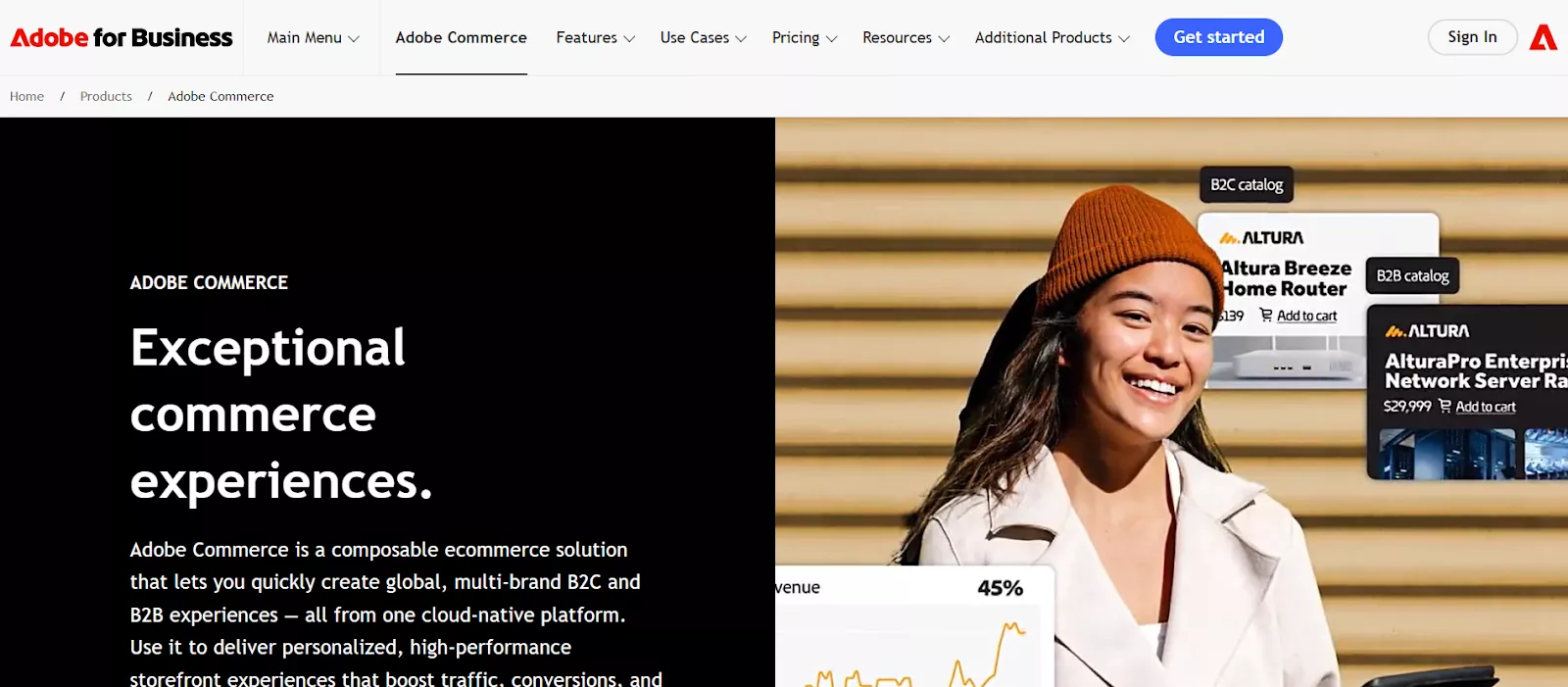
Adobe Commerce remains a powerhouse for brands that need deep customization and control. It supports complex catalogs, B2B workflows, and global operations. While it requires technical resources, it rewards you with unmatched flexibility.
Best for: Large enterprises with technical teams.
Highlight: Fully customizable architecture with enterprise-grade performance.
4. Salesforce Commerce Cloud
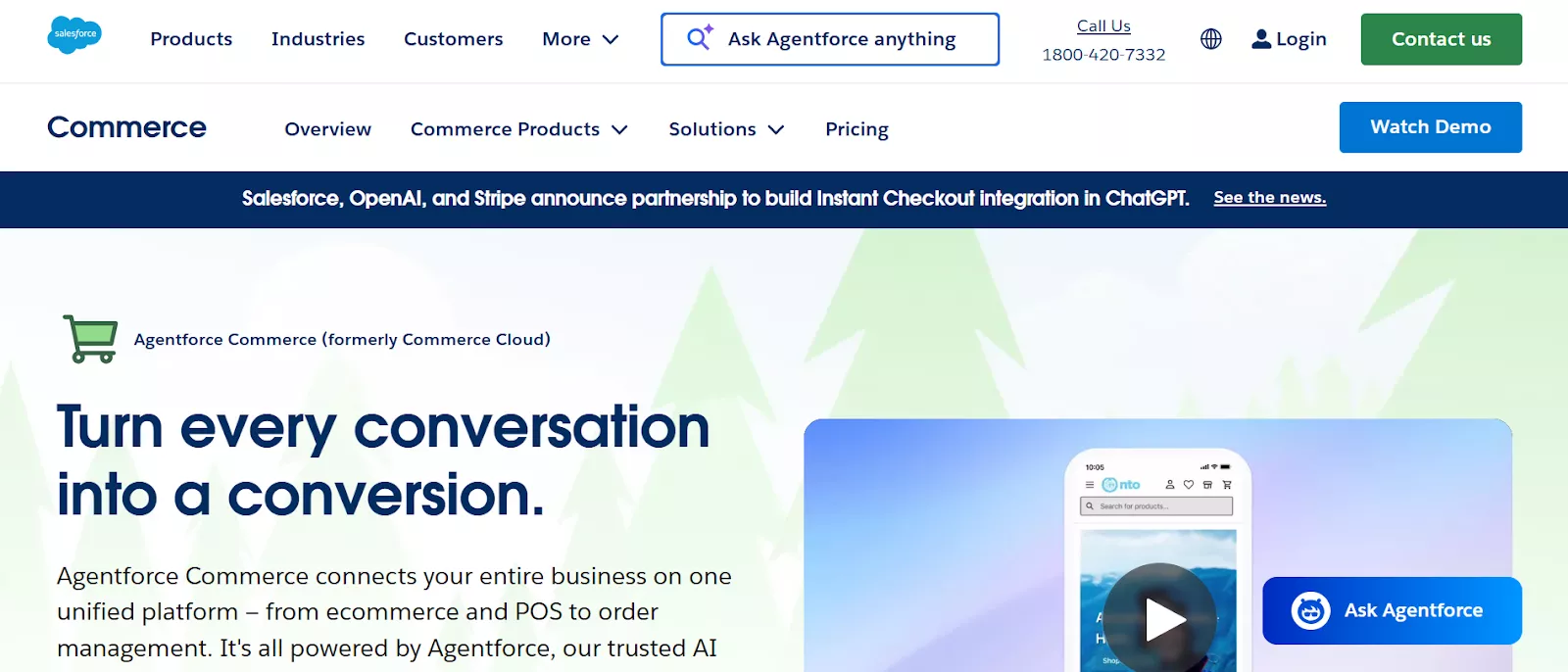
Built for scale and omnichannel performance, Salesforce Commerce Cloud is perfect for businesses already in the Salesforce ecosystem. It integrates seamlessly with CRM tools, making it easy to personalize shopping experiences at every touchpoint.
Best for: Enterprises with a focus on customer data and personalization.
Highlight: Excellent CRM integration and global scalability.
5. commercetools
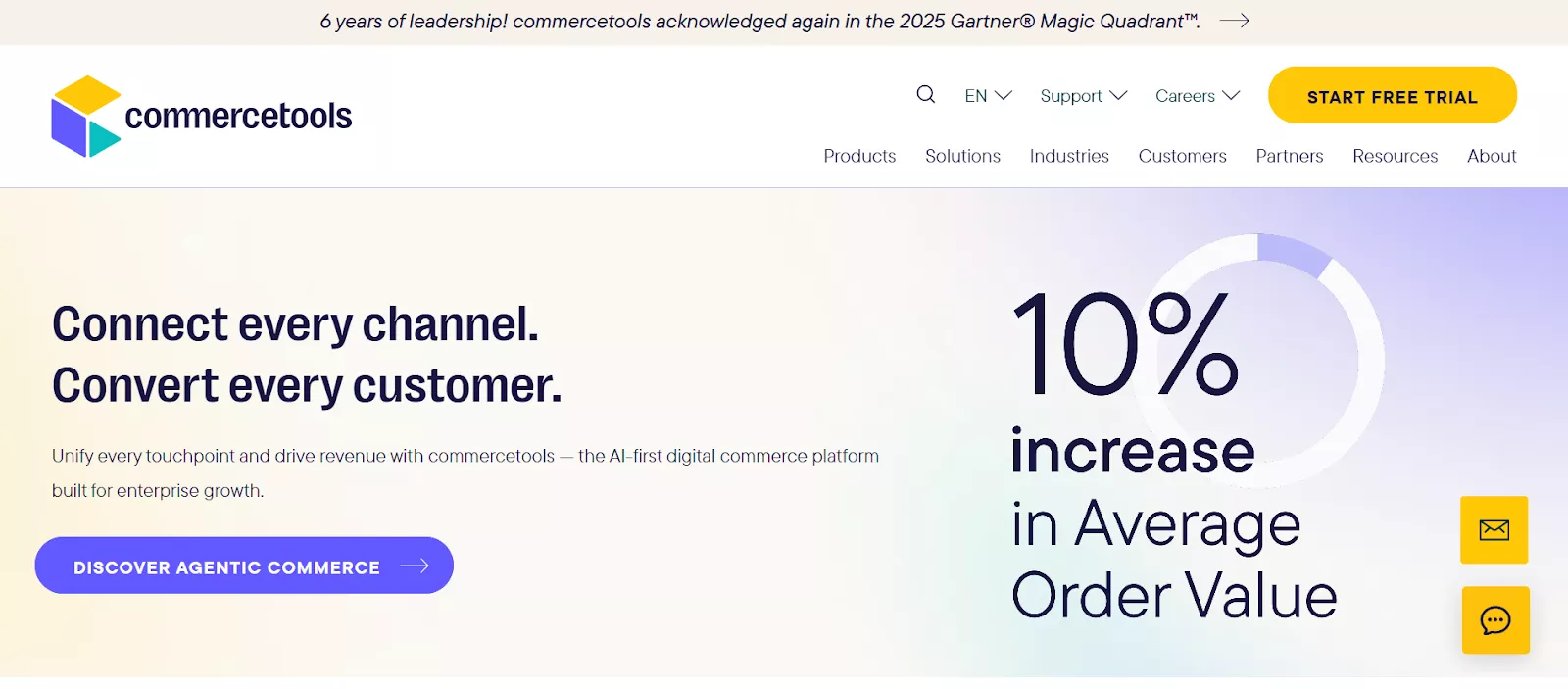
commercetools is often seen as the pioneer of “composable commerce.” Its API-first design lets businesses build exactly what they need using modular services. It’s flexible, fast, and future-proof; ideal for those ready to invest in innovation.
Best for: Large brands with complex architecture needs.
Highlight: API-driven flexibility built for innovation.
6. Elastic Path
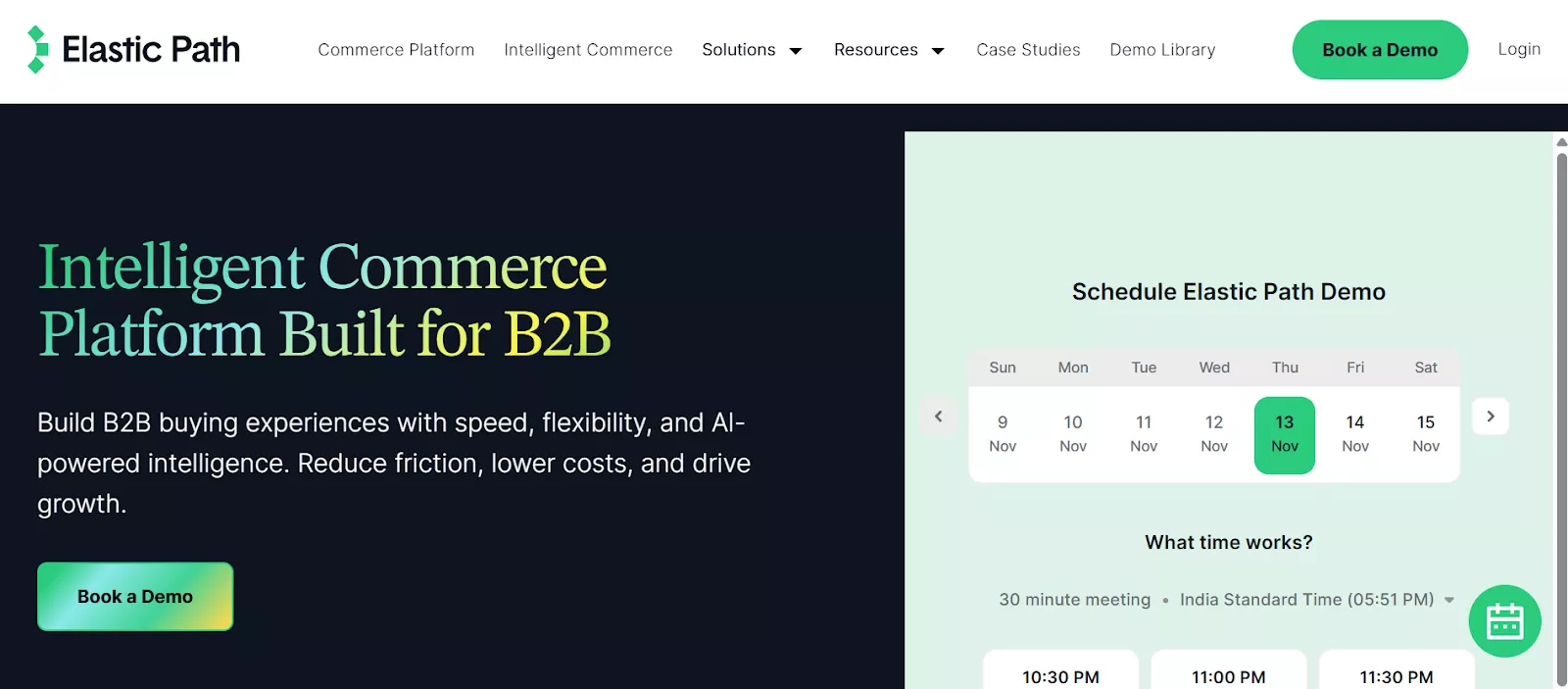
Elastic Path shines when it comes to complex product setups, subscriptions, and B2B models. The platform offers strong catalog and order management systems along with the freedom of a headless approach.
Best for: Businesses with non-standard commerce requirements.
Highlight: Excellent for advanced and custom workflows.
7. Spryker
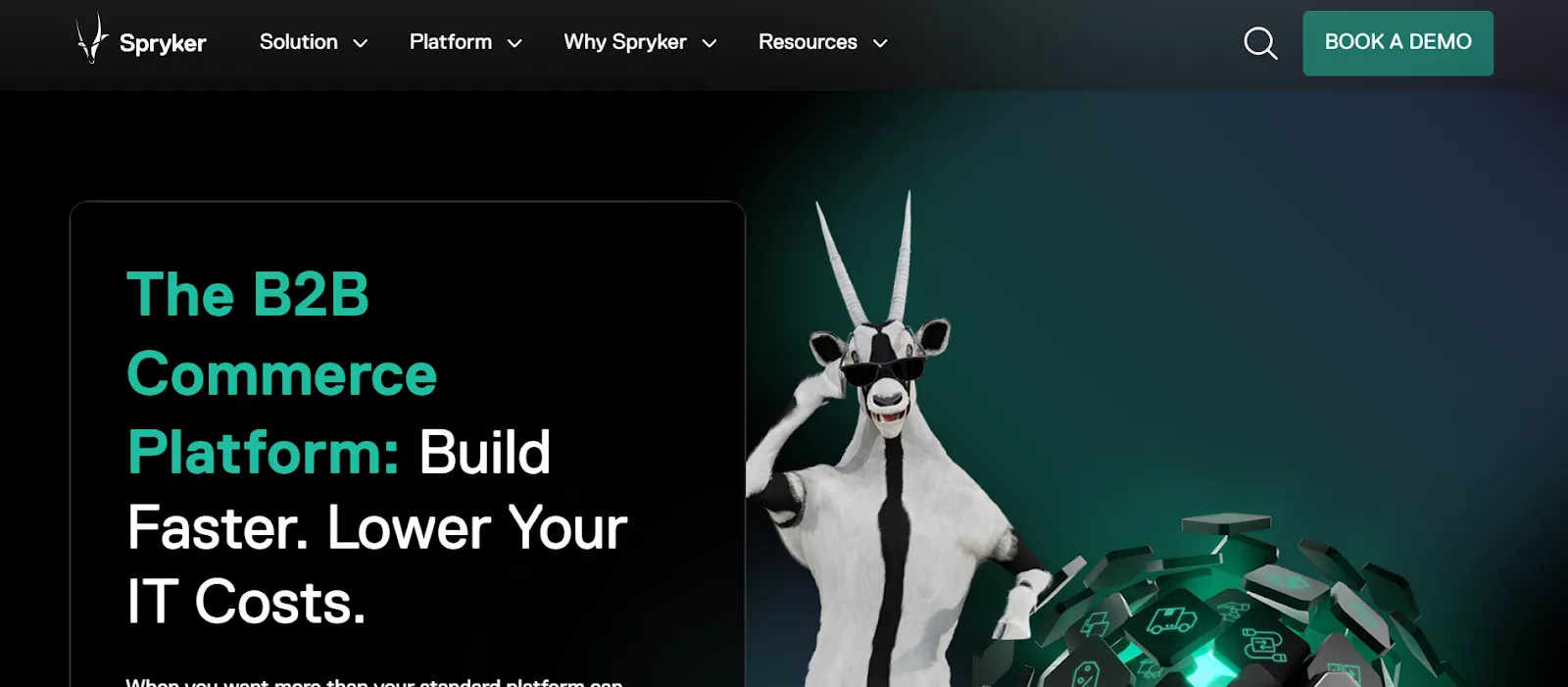
Spryker focuses on composable, modular commerce built for scalability. It supports B2B, B2C, and marketplace models, making it a favorite for ambitious brands looking to expand across multiple regions or channels.
Best for: Global brands with multi-channel strategies.
Highlight: Modular architecture ready for complex business models.
8. Fabric
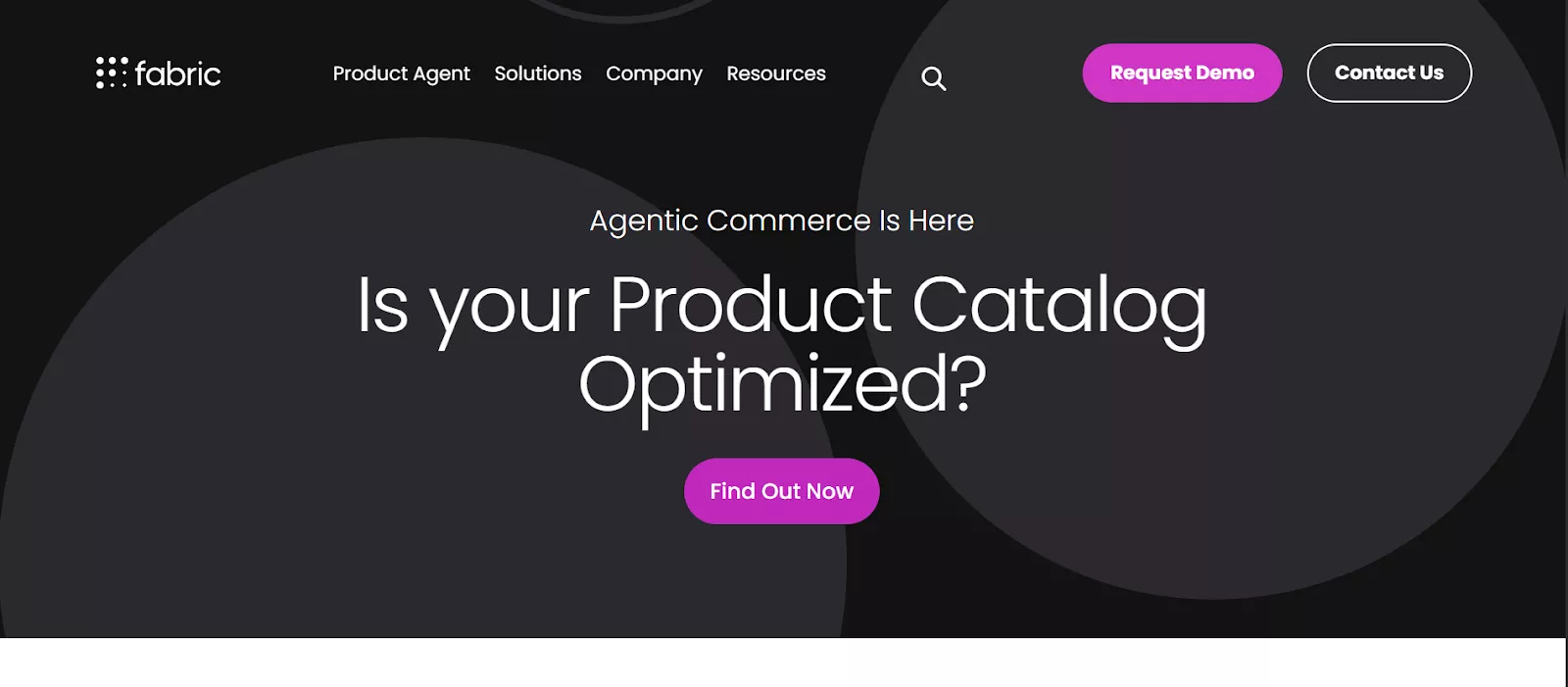
Fabric is a newer platform that’s quickly gaining momentum. Its modern, modular design allows brands to plug in tools for product information, order management, and more. It’s ideal for growing businesses that want to modernize without legacy limitations.
Best for: Scaling D2C and omni-channel brands.
Highlight: Fast implementation and a clean, modern tech stack.
9. Medusa JS
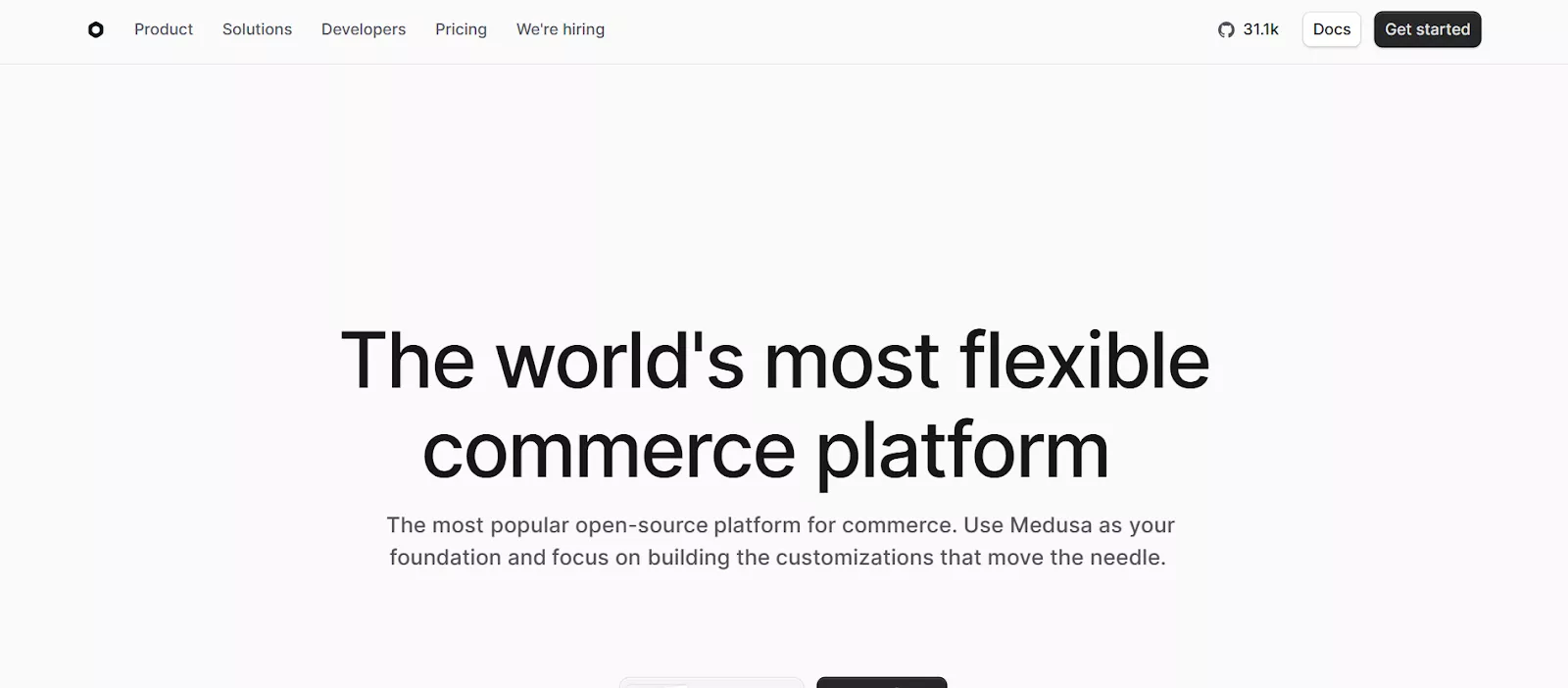
For teams that love full control, Medusa JS is an open-source platform built on Node.js. It’s lightweight, developer-friendly, and lets you create a completely custom experience without licensing costs.
Best for: Tech-savvy startups and developers.
Highlight: Open-source flexibility and no vendor lock-in.
10. Commerce Layer
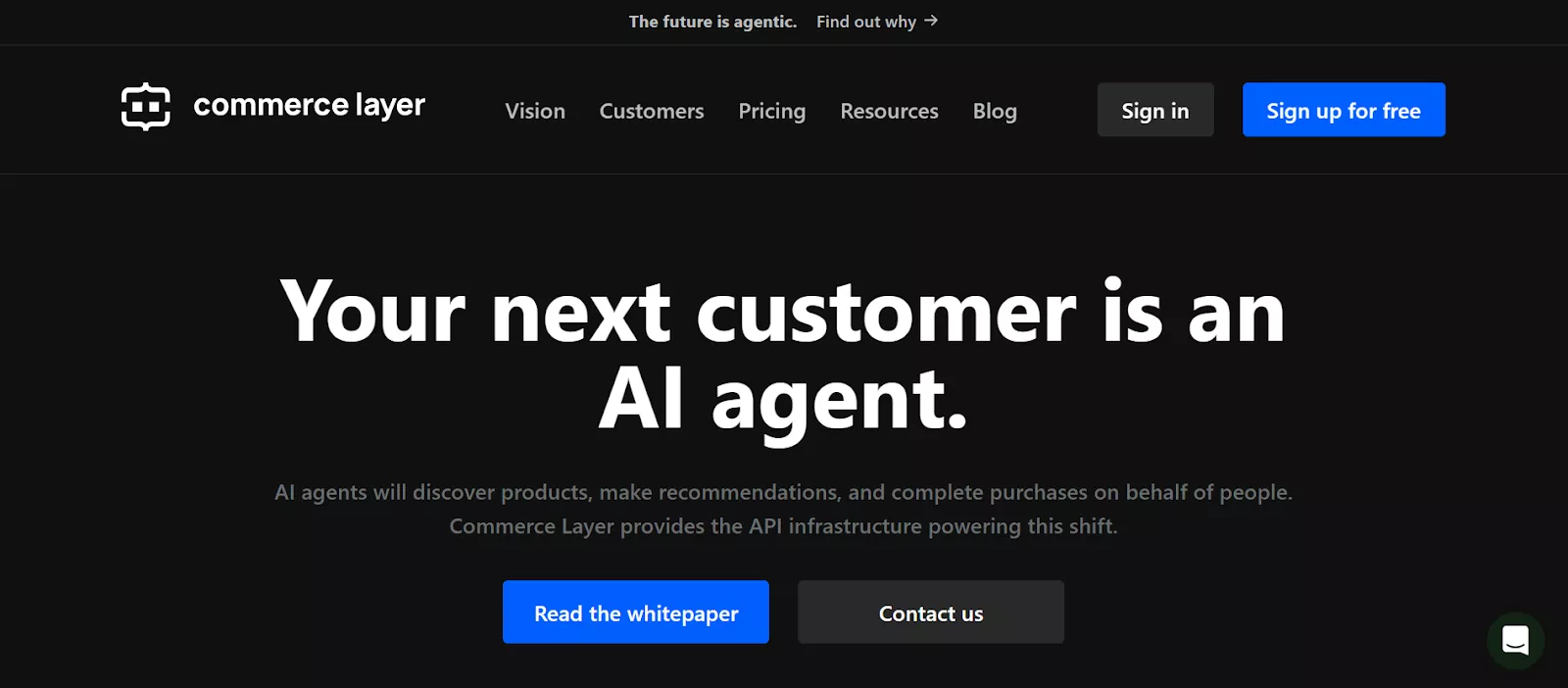
Commerce Layer is designed for brands selling internationally. The platform seamlessly handles multi-currency, multi-language, and regional operations with ease while keeping performance fast and reliable.
Best for: Global businesses expanding into new markets.
Highlight: Smooth cross-border operations and API-first infrastructure.
How to Choose the Right Headless Commerce Platform?
By now, you’ve probably realized that not every headless commerce platform fits every business.
What works perfectly for a global enterprise might be overkill for a mid-sized brand, and what’s great for a D2C store might not support the complex workflows of a B2B operation.
The good news? Choosing the right one isn’t as hard as it seems once you know what to look for.
Here’s a breakdown of the key factors to consider before you make your decision:
1. Understand Your Business Needs
Start by being honest about where your business is today and where you want it to go. Do you plan to expand internationally? Do you sell to both businesses and consumers? Or are you focusing on building a faster, more flexible digital storefront?
Having a clear picture of your priorities will help you narrow down platforms that actually fit your goals instead of chasing every shiny feature. A startup might focus on ease of use and cost, while an enterprise might prioritize scalability and advanced integrations.
2. Check Integration and API Capabilities
Headless commerce lives and breathes through APIs, so this should be one of your top considerations. Look for platforms that offer strong, well-documented APIs that make it easy to connect your content management system, marketing tools, CRM, and analytics.
The better the integration options, the smoother your overall workflow will be. A platform that supports REST and GraphQL APIs, for example, will give your developers the flexibility to build a connected experience across every channel.
3. Evaluate Performance and Scalability
Speed matters. Your customers expect quick load times, seamless checkouts, and zero downtime, even during high-traffic events. Choose a platform with cloud-based infrastructure and automatic scaling to handle growth without lagging or crashing.
Also, consider how the system performs under stress. A reliable headless platform should be able to support large product catalogs, global traffic, and real-time updates without sacrificing performance.
4. Assess Developer Experience
Even if you’re not a developer, this factor still matters. The easier it is for your technical team to work with the platform, the faster you’ll see results. Look for clean documentation, SDKs, strong community support, and a variety of development frameworks.
A platform that’s developer-friendly saves time, reduces errors, and makes it easier to roll out new features or updates. This means your business can innovate faster and adapt to market trends without waiting for long development cycles.
5. Review Security and Compliance
Security should always be a non-negotiable. You’ll be handling sensitive customer data, payment information, and personal details, so the platform you choose must meet modern security standards.
Look for compliance with major regulations like GDPR and PCI DSS, along with features such as data encryption, secure APIs, and regular security updates. The more proactive the platform is about protecting your data, the more confident your customers will feel shopping with you.
6. Compare Pricing and Total Cost of Ownership
It’s easy to get caught up in features, but don’t overlook your budget. Headless commerce platforms vary widely in pricing models; some charge per transaction, others by usage, and some by API calls.
Make sure you factor in not only the subscription cost but also development time, integrations, and ongoing maintenance. The goal is to find a platform that gives you long-term value rather than short-term savings.
7. Consider Future Flexibility
Finally, think long term. The eCommerce landscape changes fast, and your platform should be able to evolve with it. Choose one that supports emerging technologies, omnichannel selling, and easy upgrades.
A future-ready platform will let you experiment with new channels, like mobile apps, AR experiences, or smart devices, without rebuilding your entire system. That flexibility is what keeps your brand competitive in the years to come.
Partner with Bitcot to Build Your Custom Headless eCommerce Solution
Choosing the right headless commerce platform is just the first step. The real magic happens when you have the right team to bring your vision to life.
That’s where Bitcot comes in: a trusted technology partner that helps brands design, develop, and launch powerful headless eCommerce experiences built for performance and growth.
Here’s what partnering with Bitcot means for your business:
- Custom Strategy for Your Brand: We take the time to understand your goals, your customers, and your existing systems. Whether you’re scaling an enterprise store or launching a D2C brand, our team creates a strategy tailored specifically to your business model.
- End-to-End Development Expertise: From API integrations and front-end design to backend optimization, we handle the entire build process. You get a seamless experience that connects every part of your digital ecosystem.
- Future-Ready Architecture: Our solutions are designed with flexibility in mind. As your business grows, your platform can easily adapt to new channels, technologies, and customer demands, without the need for complete rebuilds.
- Faster Time to Market: With proven frameworks and agile development processes, we help you launch faster and start seeing results sooner. The goal is to deliver high-quality, scalable solutions without unnecessary delays.
- Continuous Support and Optimization: Building your headless store is just the beginning. We offer ongoing support, performance monitoring, and regular updates to ensure your platform stays secure, efficient, and up to date.
- A Partner You Can Rely On: Bitcot isn’t just a development team; we’re a long-term partner focused on helping you innovate, compete, and grow in a fast-changing digital world.
Ready to take your eCommerce experience to the next level? Choose Bitcot to build a custom headless solution that gives your brand the speed, flexibility, and scalability it deserves.
Final Thoughts
Headless commerce isn’t just a passing trend; it’s the future of how modern brands connect with their customers. In a world where shoppers expect fast, seamless, and personalized experiences across every channel, going headless gives you the flexibility to deliver exactly that.
But remember, technology alone doesn’t guarantee success. The real difference comes from how well your platform is built, customized, and integrated into your business goals. That’s why having the right development partner matters just as much as choosing the right platform.
If you’re ready to take your eCommerce experience to the next level, Bitcot can help you get there. With a team that understands both the tech and the strategy behind headless commerce, Bitcot builds solutions that are fast, scalable, and built around your brand’s unique needs.
From architecture design to ongoing optimization, Bitcot’s custom eCommerce development services help you create a digital store that grows with your business.
Ready to future-proof your online store?
Get in touch with Bitcot today and start building a headless CMS & eCommerce solution that’s as flexible and forward-thinking as your brand.



